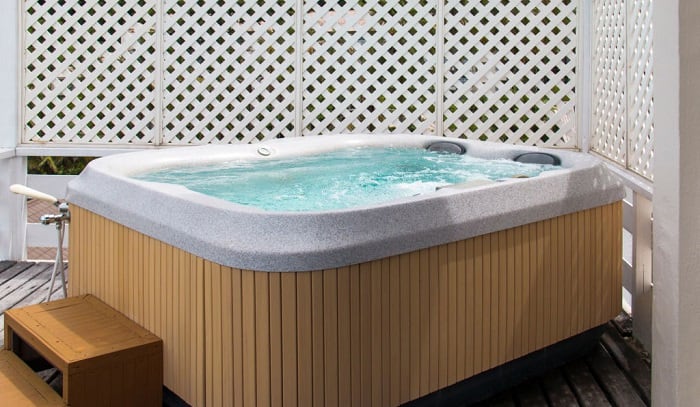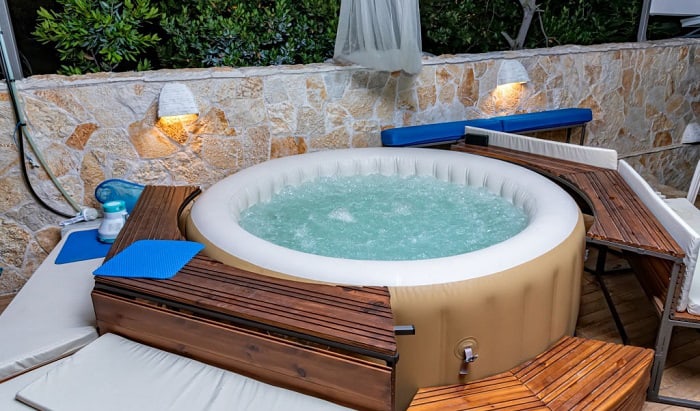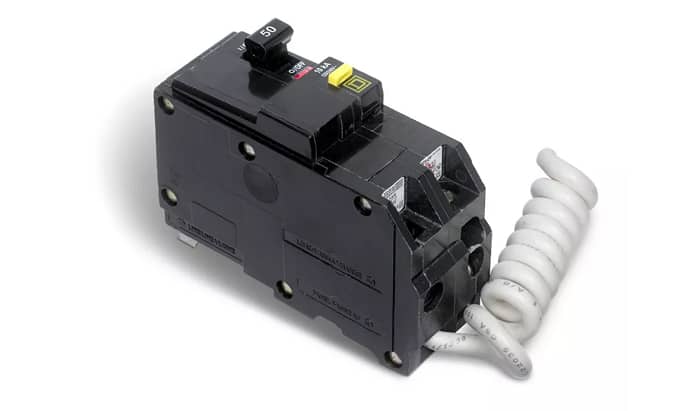The most valid answer to the question, “What size breaker do I need for a hot tub?” is 50 amps. This is, of course, assuming you also have a standard 40 amp, 220V, or 240V hot tub. A 50 amp hot tub breaker is fairly common among homeowners, as are 40 amp and 60 amp varieties.
Essentially, it’s not a one-size-fits-all thing. Some tubs run fine with a 20 amp or 30 amp circuit breaker. Therefore, you can’t skip sizing the appropriate breaker for the spa you wish to set up. Stick to the manufacturer’s instructions if you’re unsure. I’ve explained more of the mechanics and gave a couple of tips below.
Table of Contents
Why It’s Best to Follow the Manufacturer’s Recommendations and Guidelines
While I mentioned that the average hot tub breaker size is 50 amps, it’s almost always better to simply listen to what the spa brand recommends. They know their products best, after all. Don’t be surprised if they ask you to use a higher 50 amp or 60 amp breaker.
For example, you’ll see tub specs stating it’s 40 amps but recommends a higher 50 amp circuit. Others are 48 amps, which bumps the requirements to a 60 amp breaker. Why is this the case?
Well, it’s more than likely that the manufacturer is anticipating other features of the tub. For instance, you may have a 48 amp tub with a heater that may do fine on a 50 amp breaker with just the pump running. But once you start the heater along with it, the circuit breaker trips.
In short, it mainly depends on how much you’re utilizing a piece of equipment. Why would you opt for lower amperages knowing you won’t make the most out of your spa if you do so?
The Requirements Stem from the 125% Motor Load Rule, Too.
In the US, it’s often required to account for an extra 125% load for most motors. We arrived at 50 amps for a 40 amp tub because of the following formula: 40 x 125% = 50. The same applies to the 48 amp one.
Wiring to the Maximum Amperage Requirement Pays Off and Is Usually the Way to Go for Most
If you plan to expand your tub or want the “full package” from the get-go, then you should consider wiring to the highest capacity. This way, you’ll always be sure that the tub will heat optimally while running all its pumps. I always take this route with the thought that I’ll only make things more complicated than it has to be otherwise.
It’s also standard procedure among professional electricians to allow upsizing as long as the calculated load is less than the wire’s rating. All in all, you don’t have to worry too much about the tub pulling too many amps.
However, to be safe, the best thing you can do to confirm this once and for all is to ask your local electrical inspector. Chances are, he or she will point you toward the manual as well.
You May Need a GFCI Breaker for Your Hot Tub
You’ll find many homeowners asking for the correct wiring of, let’s say, a 50 amp GFCI breaker for a hot tub. GFCI (ground-fault circuit interrupter) protection is a fairly common requirement for hot tubs. This is also usually dictated by where you’ll be placing your tub, whether it’s indoor or outdoor.
For outdoor hot tubs, you’ll need to pay attention to these requirements:
- The receptacle should be GFCI-protected and weatherproof.
- Its distance from the interior walls of the hot tub should be at least 6 feet and should not exceed 10 feet.
- You can connect the tub with a plug and cord, but its receptacle should be verified to be GFCI-protected. The wire run shouldn’t be longer than 15 feet as well.
As for indoor tubs, you may be asked to adhere to the following guidelines:
- You must ensure that you’re using a GFCI-protected receptacle.
- The said receptacle’s distance from the hot tub’s interior wall should not go below 6 feet and above 10 feet.
If you are confused about the difference between GFCI circuit Breaker and GFCI receptacle, please check this article for more details.
On the whole, GFCI may be more expensive, but I think they’re well worth it for the peace of mind they impart, especially when dealing with possible ground faults.
Want to learn how to install one? If yes, I suggest you watch this relatively brief but info-packed video shared by an actual pro:
Conclusion
What size breaker do I need for a hot tub? The answer should be provided by the product or the manufacturer first.
- Otherwise, follow the guidelines I’ve laid out here.
- To verify, consult your local electrician, the manufacturer, or platforms that offer technical support when installing tubs and spas.
- Don’t forget about local requirements pertaining to GFCI breakers.

I am Edwin Jones, in charge of designing content for Galvinpower. I aspire to use my experiences in marketing to create reliable and necessary information to help our readers. It has been fun to work with Andrew and apply his incredible knowledge to our content.



